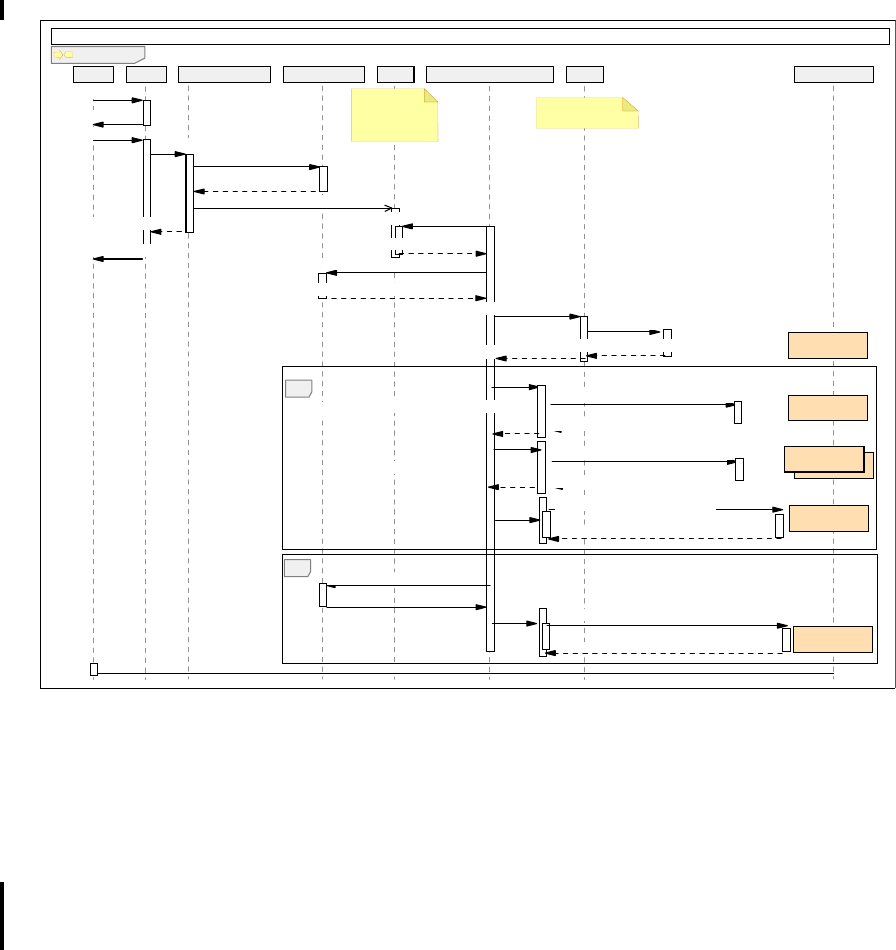234 Patterns: Implementing Self-Service in an SOA Environment
Application pattern selection
The activity diagram makes the requirements of the application a little clearer. At
this stage, we can see that several application patterns might be appropriate.
Directly Integrated Single Channel
There is one service provider for the credit check action and one for the
e-mail action. These services will be accessed using a direct connection.
Router
The customer will have the opportunity to select the product and delivery type
in which they are interested. The application will examine the choice selected
by the customer and route the request to the appropriate application. The
application will assign an account number to the new customer.
Decomposition
In the event that the customer selects multiple types, the application will send
that request to each selected business division and collect the account
numbers before responding to the client.
8.3.2 Sequence diagram
ITSOMart next used a sequence diagram to illustrate the chronological sequence
of messages between objects in an interaction. The sequence diagram for the
customer registration scenario is shown in Figure 8-3 on page 235.

Chapter 8. Business scenario and design 235
Figure 8-3 Sequence diagram of ITSOMart application
The flow of the ITSOMart application is as follows:
1) A customer accesses the Web site and clicks a button requesting to
register. The request is processed by a JSP, which provides a form
for user information.
2) The customer enters the requested data and clicks a Submit button.
JSF is used to validate the data on the client-side. The data includes
customer data and the type of account requested. One or more
account types can be selected.
3.1.1) The JSP stores the data input by the customer into a DB2 database
using CMP’s.
3.1.3) Next, it places a message on a queue containing the primary key of
the record stored in the database.
1: Cust Entry Page
2: Cust Entry Page
<<return>>
3.1: process details
3.1.1: Store User Details
<<return>>
3.1.2: Store User Details
3.1.3: Put PK of DB in MQ Q
<<return>>
User: View: Model/Controller: Local DB2 DB: JMS: MDB/Processor Module: ESB: Credit Check WS: Services:
Interaction1
View: Model/Controller: Local DB2 DB: JMS: MDB/Processor Module: ESB:
Services:
User:
JMS can be
a standalone
WebSphere MQ
or ESB
WS stands for
Web Service
[Good Credit]
3.1.3.2: Send Email
3.1.3.1: process details
3: Page Submit
<<return>>
3.1.3.1.1: Page Submit
<<return>>
3.1.3.1.2: Retrieve PK details
<<return>>
3.1.3.1.3: Retrieve PK details
3.1.3.1.5: Get Cust details from DB using PK
3.1.3.1.6: Get Credit Rating
3.1.3.1.6.1: Get Credit
3.1.3.1.6.2: Get Credit
<<return>>
3.1.3.1.7: Get Credit Rating
alt-a
3.1.3.1.4: Get Cust details from DB using PK
<<return>>
3.1: Get Message and send Email
3.2: Get Message and send Email
<<return>>
1: Delete User from Local DB
<<return>>
2: Delete User from Local DB
[Bad Credit]
3: Put Rejection Email
alt-b
Credit Check
3.1: Get Message and send Email
3.2: Get Message and send Email
<<return>>
3: Put Acceptance Email
E-mail
Account
21: Calls WS to get account number
2.2: Calls WS to get account number
<<return>>
2: Get account number
1: Put customer details in CRM
Customer
CRM
1.1: Calls JCA WS to put customer details in CRM
1.2: Calls JCA WS to put customer details in CRM
<<return>>
E-mail
Get Patterns: Implementing Self-Service in an SOA Environment now with the O’Reilly learning platform.
O’Reilly members experience books, live events, courses curated by job role, and more from O’Reilly and nearly 200 top publishers.

